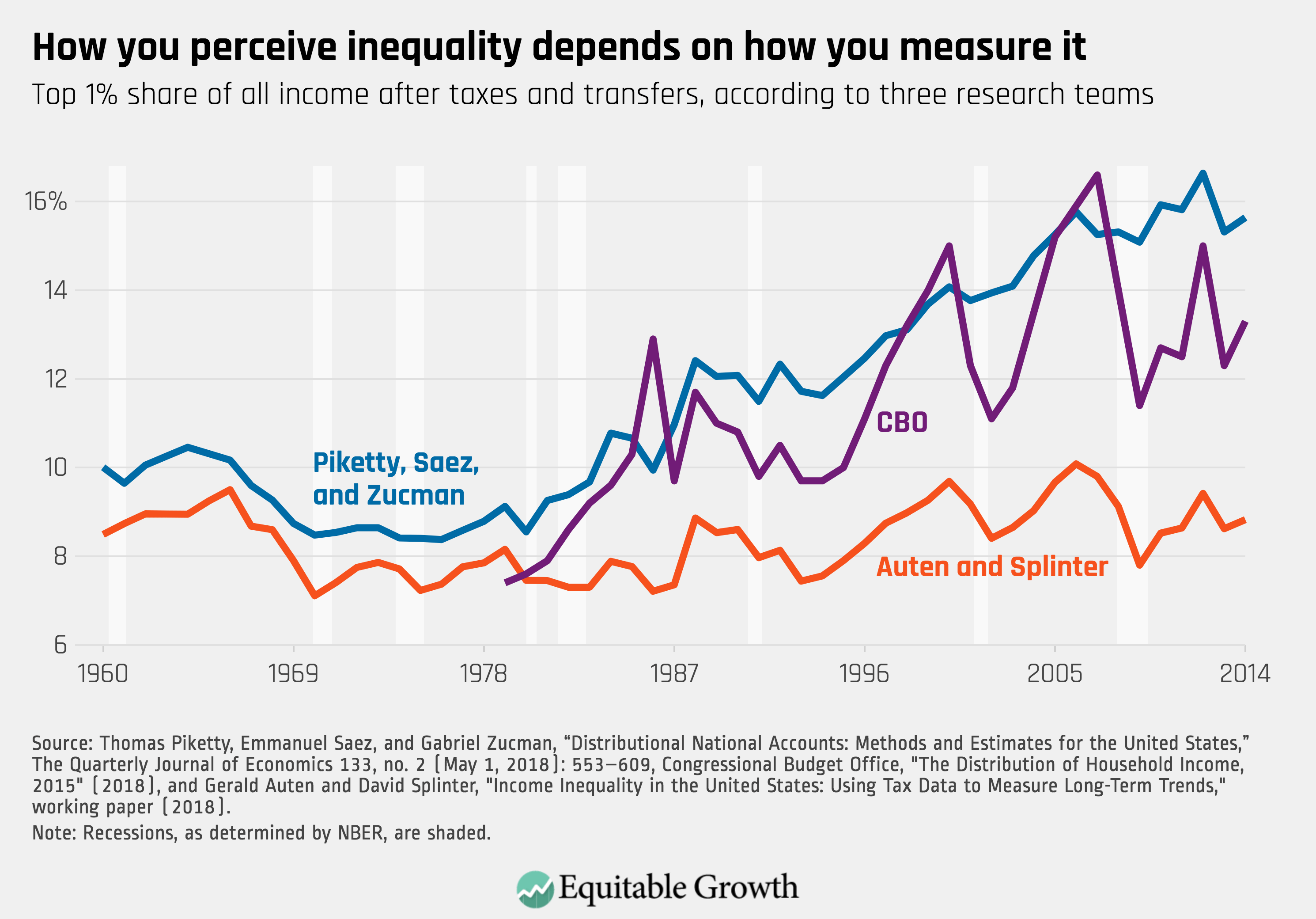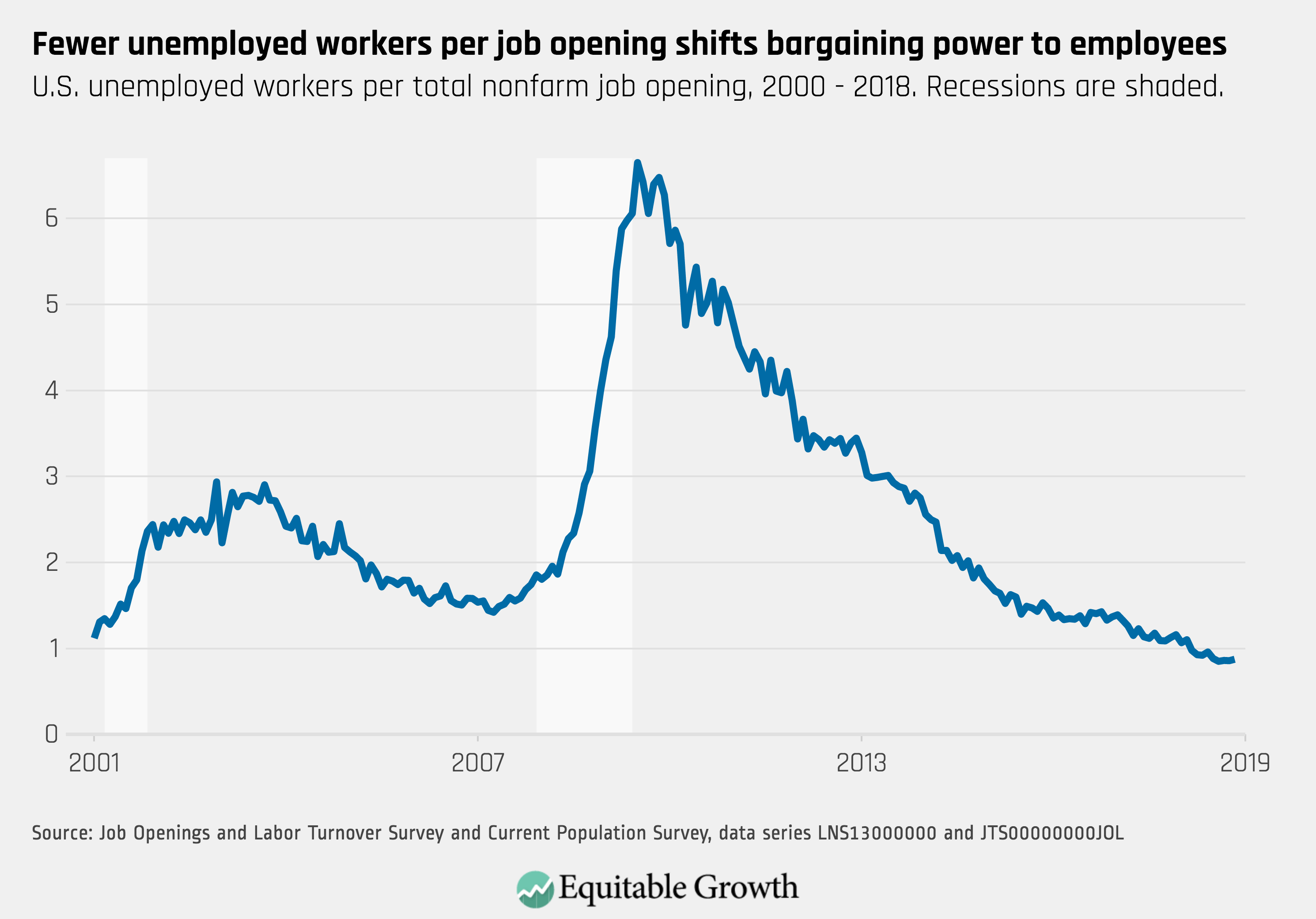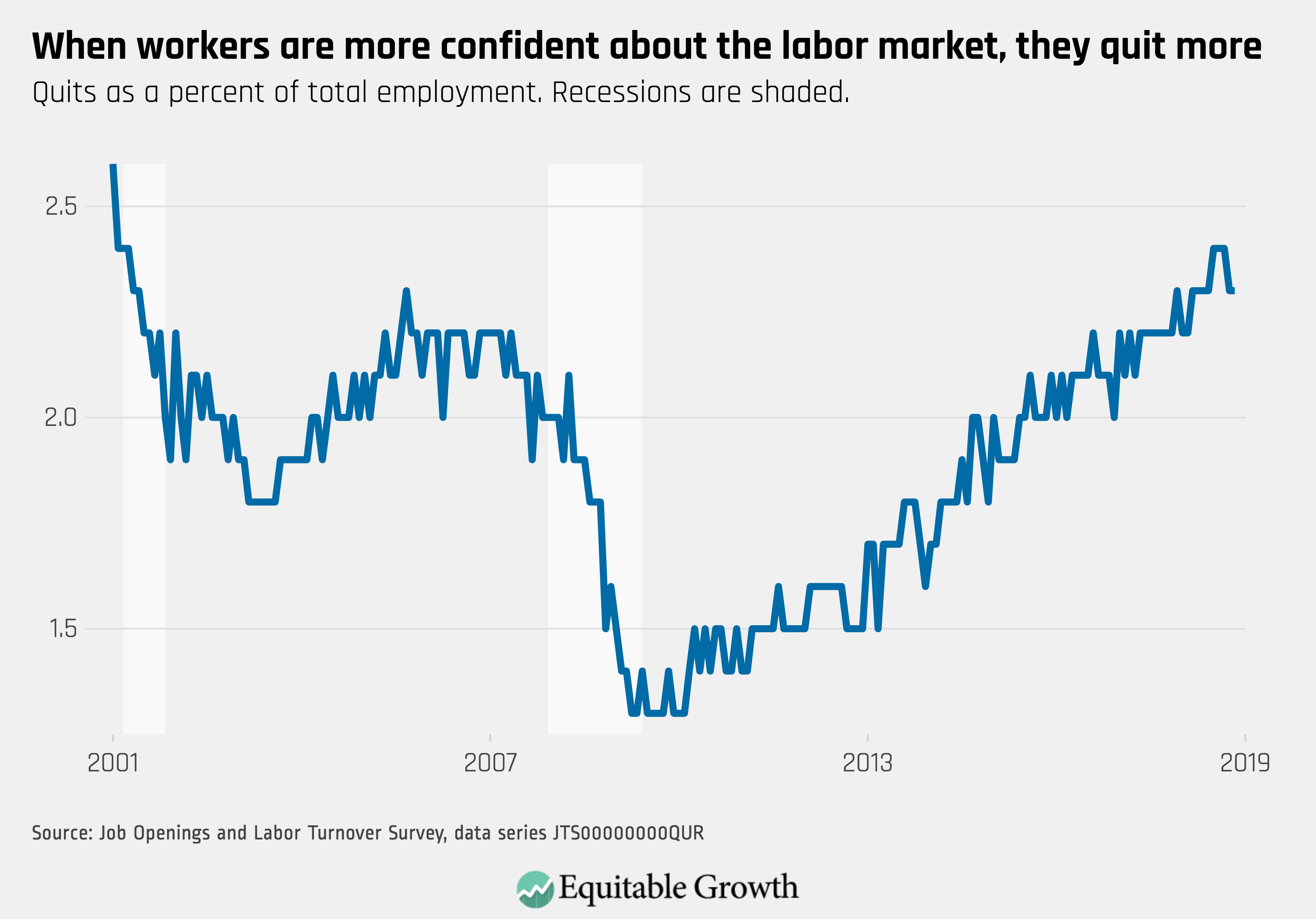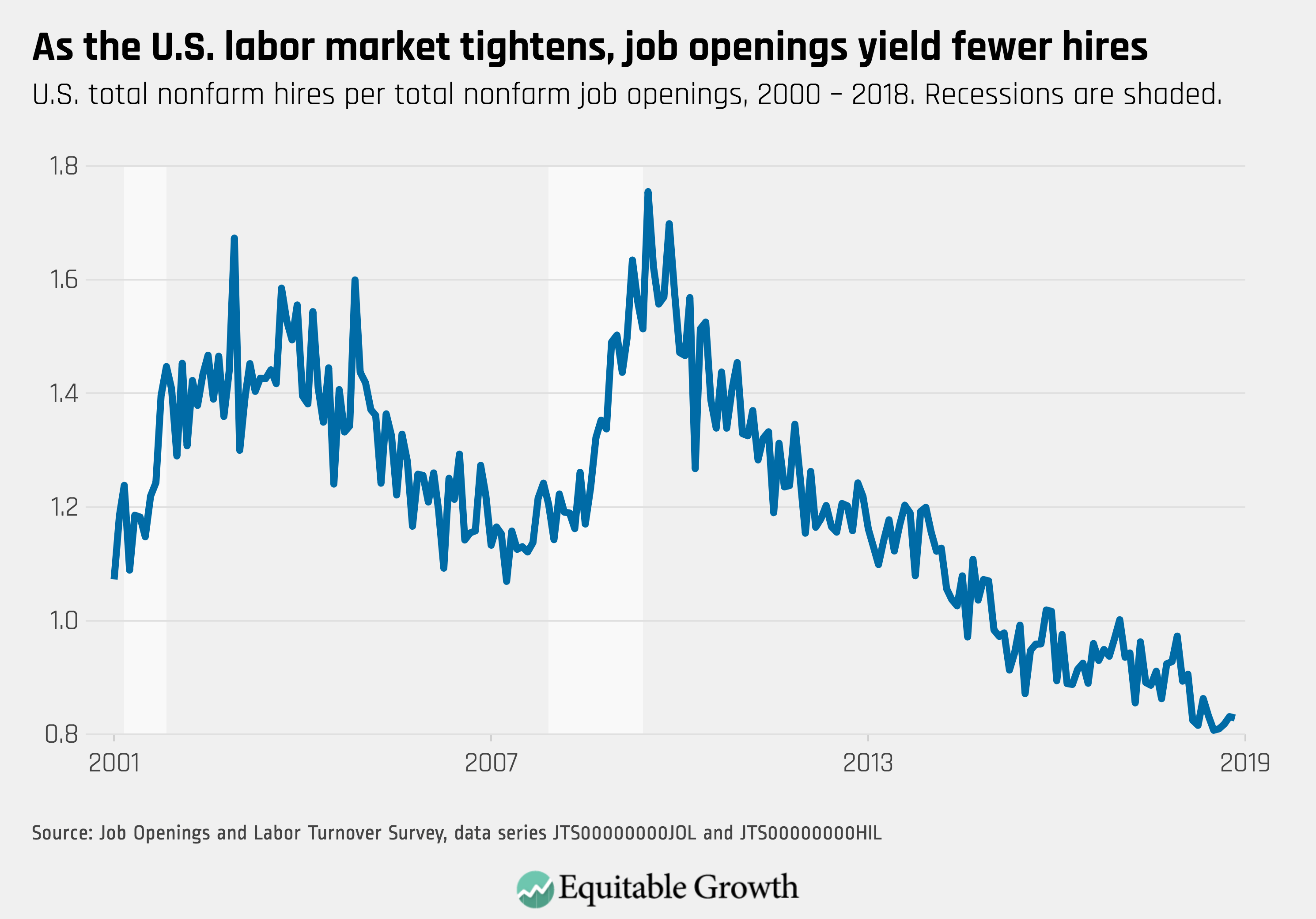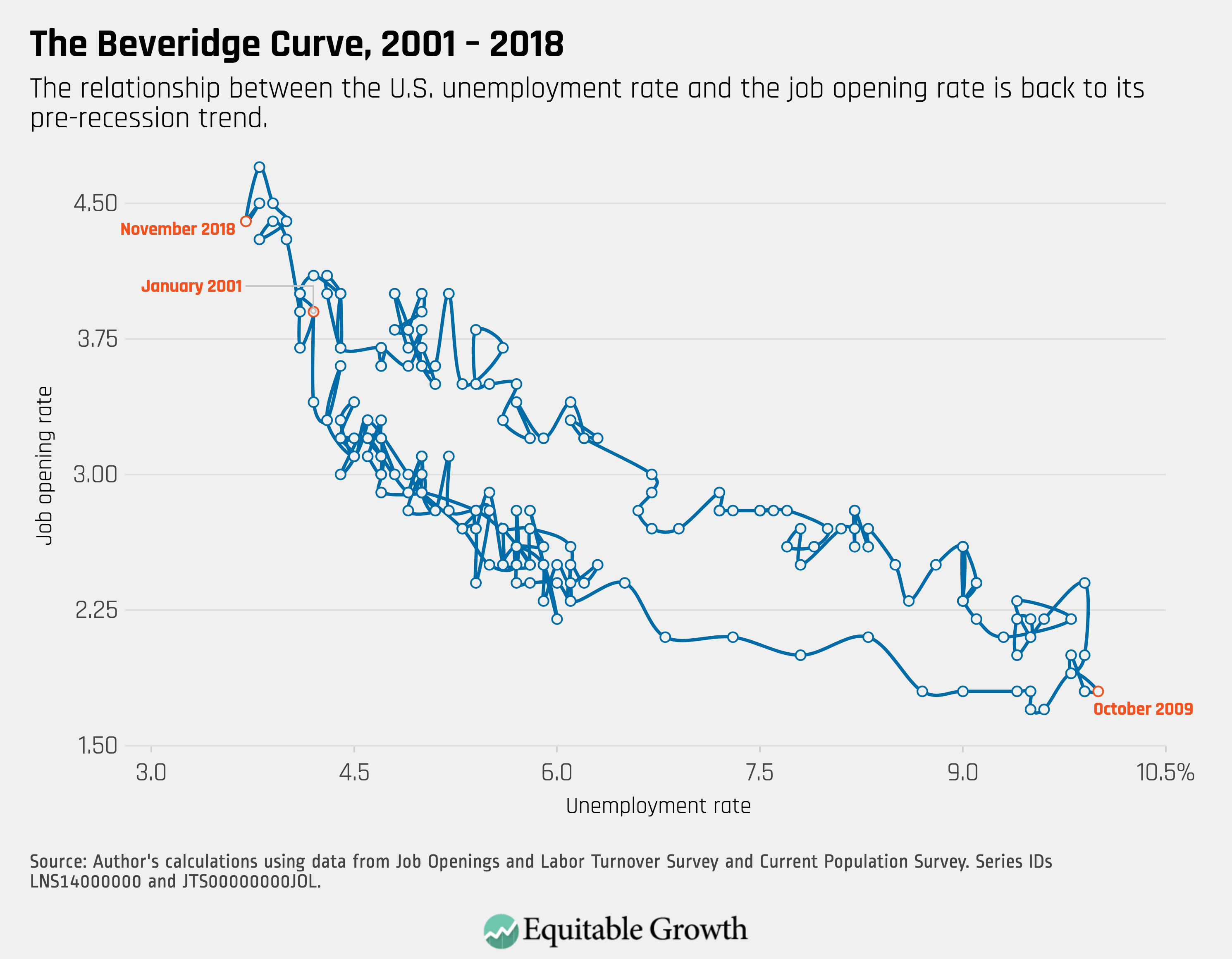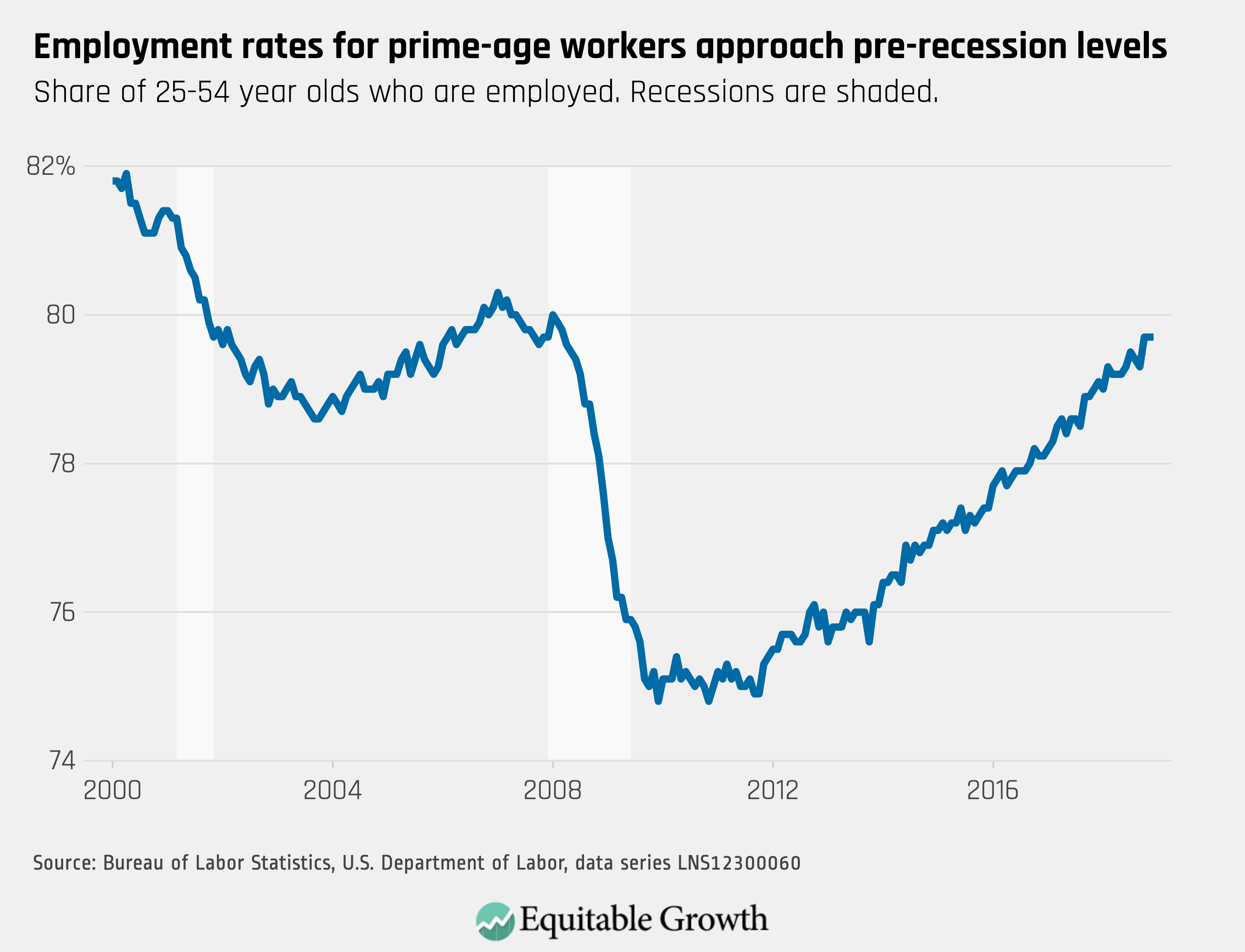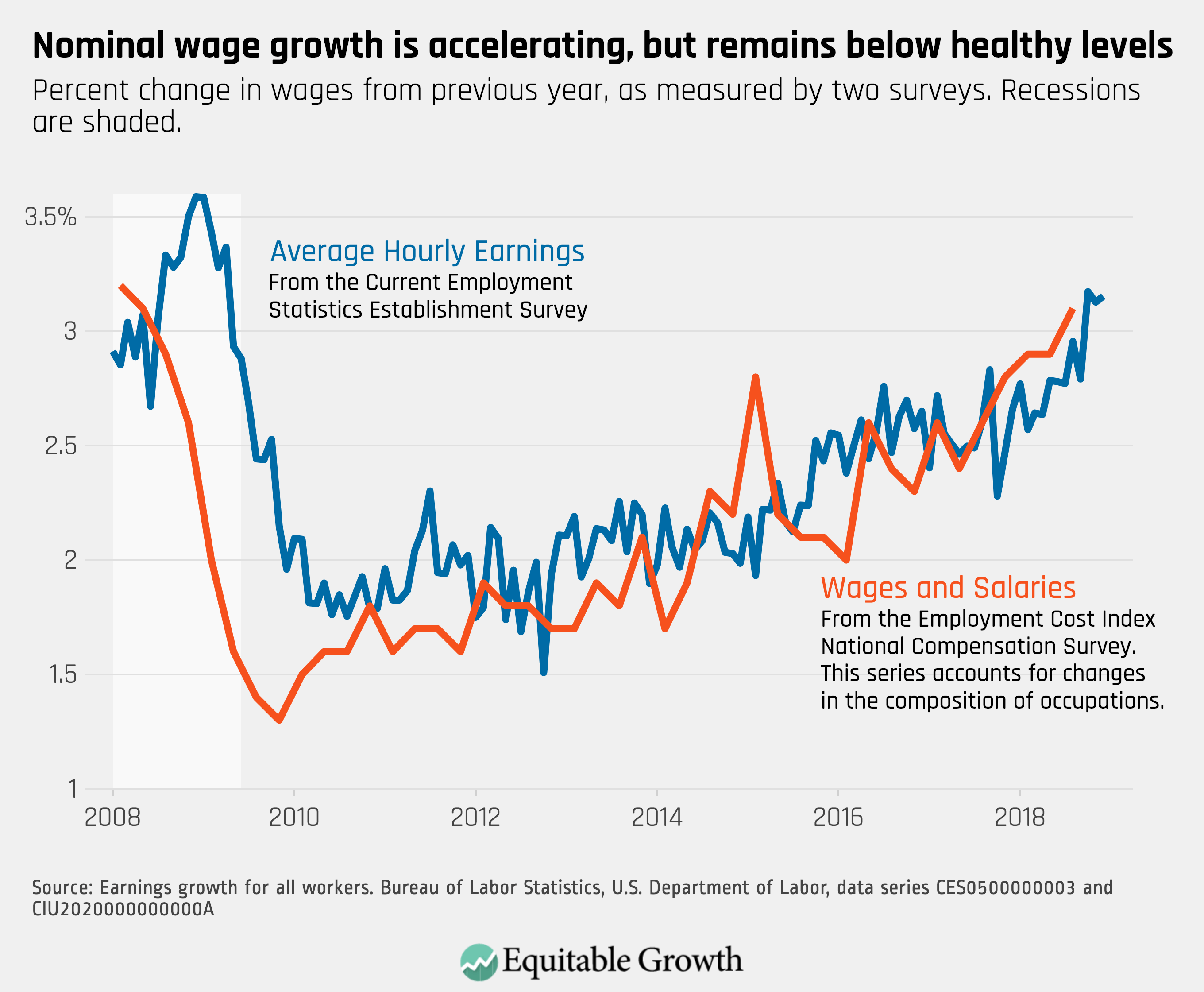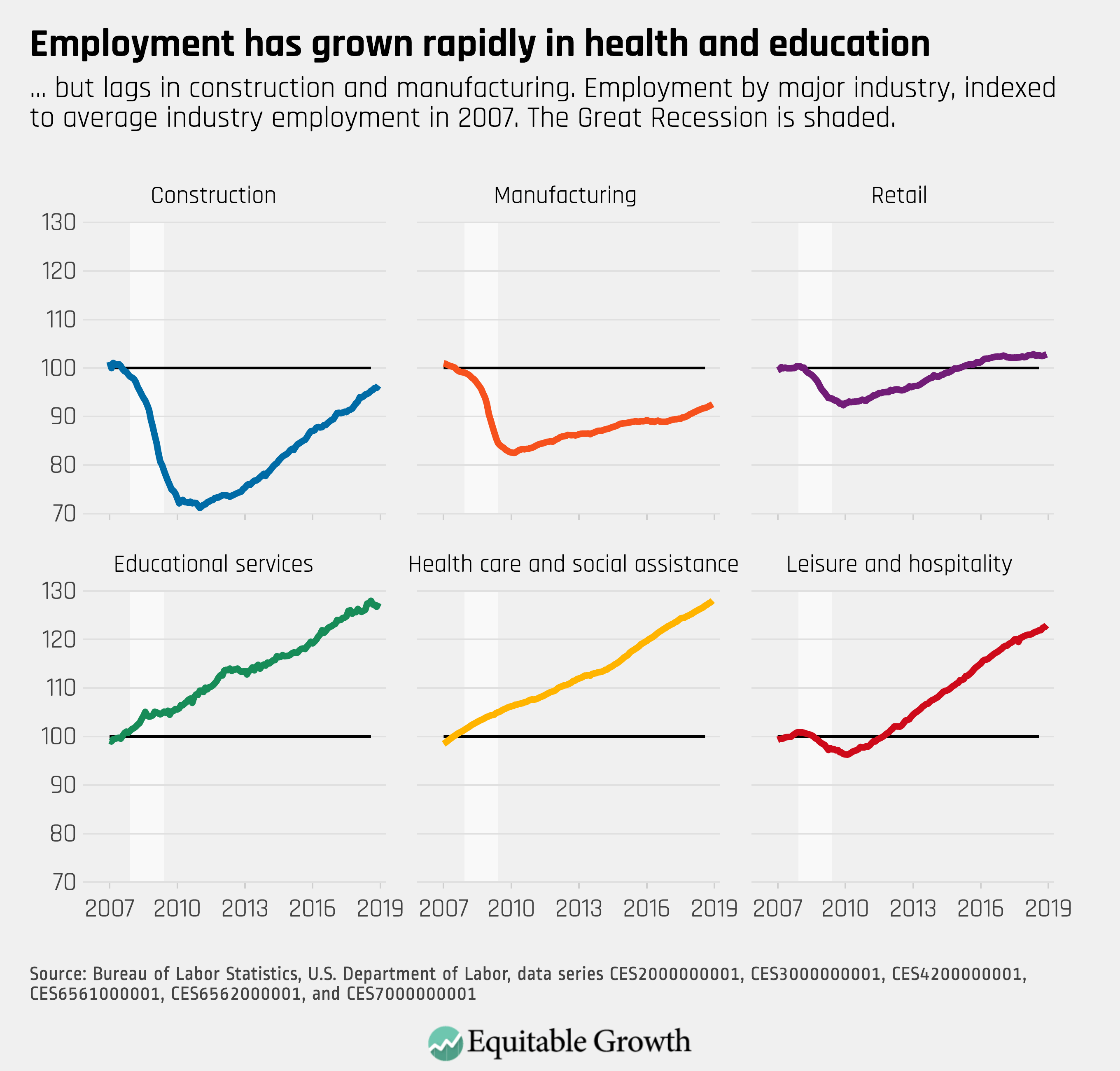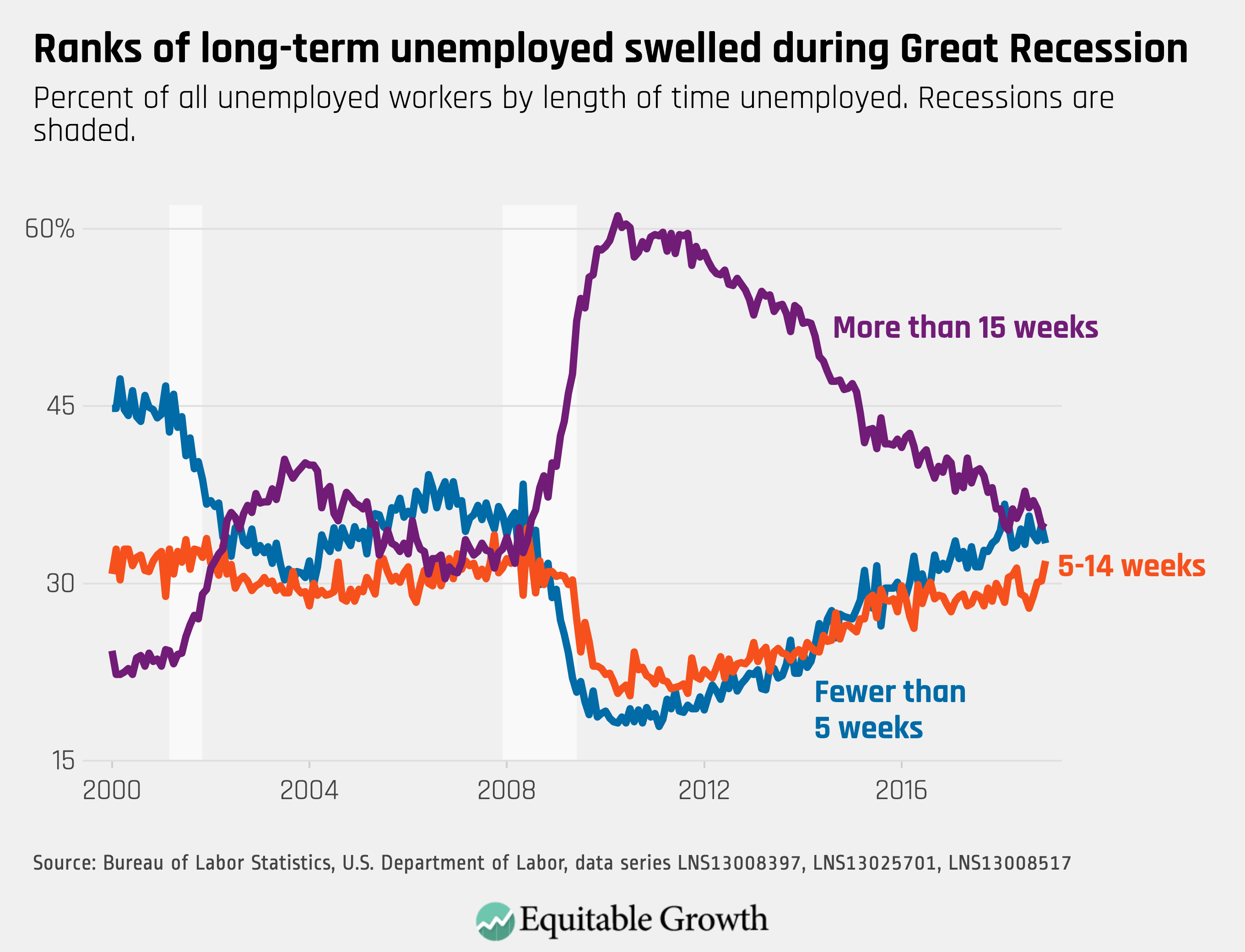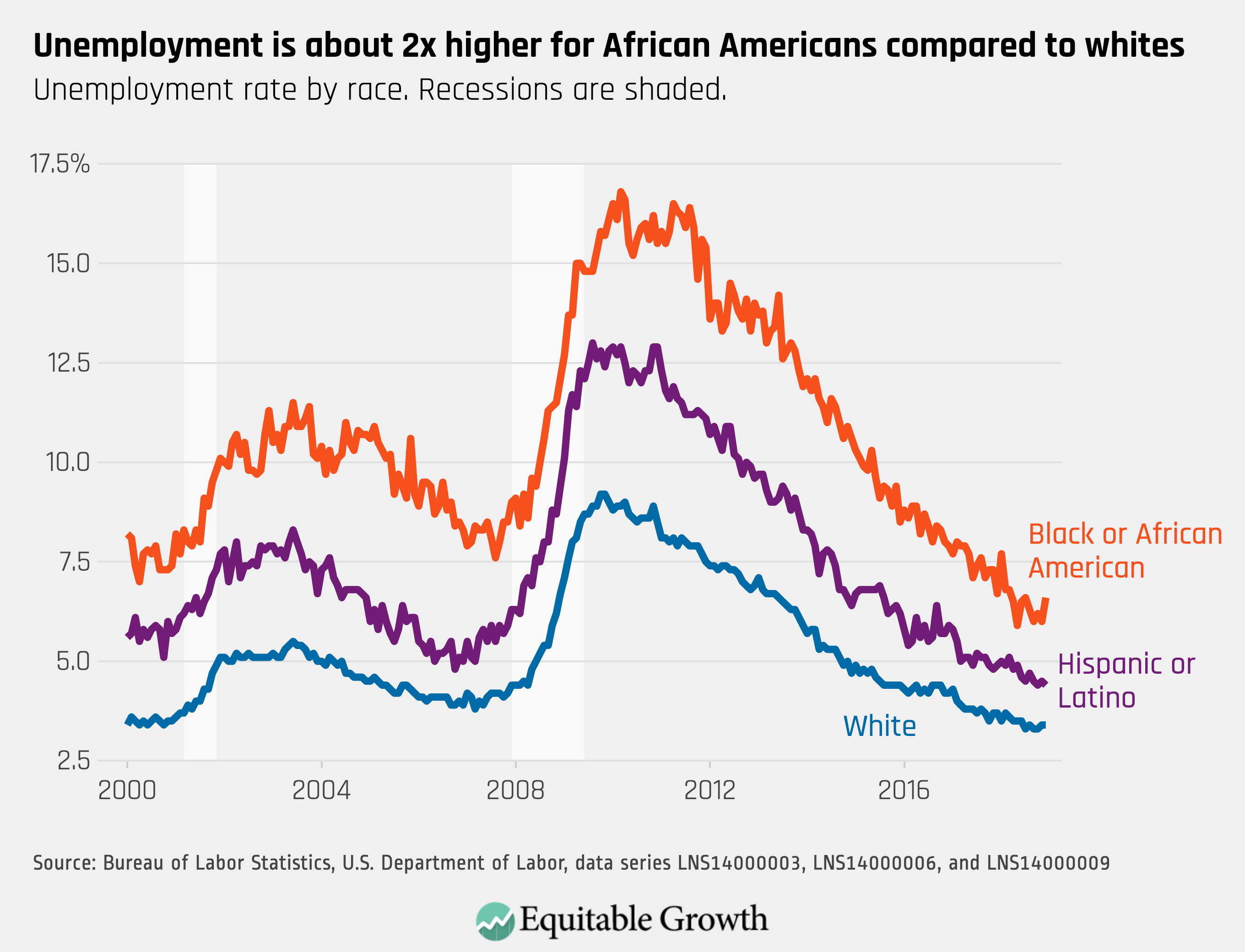
The annual meeting of the Allied Social Science Associations started today in Atlanta. The conference features hundreds of sessions covering a wide variety of economics research. Interesting research is all over the place here, so below are some of the papers that caught the attention of Equitable Growth staff during the first day. Included below are the abstracts from those papers as well as links to the sessions at which they were presented. Check back tomorrow and Sunday evening for further highlights.
“The Role of Education and Gender in Trends in Earnings Inequality and Mobility in the United States”
Michael Carr, University of Massachusetts-Boston, and Emily Wiemers, University of Massachusetts-Boston
Abstract: This paper uses survey-linked administrative earnings data to document trends since 1980 in short-run and long-run within-group, or residual, earnings inequality and within group intragenerational earnings mobility. Our administrative data are unique in allowing the estimation of earnings inequality overall and earnings inequality within education by experience groups separately by gender, allowing for the first analysis of residual inequality and mobility with administrative earnings data. Consistent with other work, we find large increases in top-end residual inequality in both short and long-run earnings. However, while there is a small decline in short-run residual inequality at the bottom of the distribution consistent with polarizing short-run earnings, there is a substantial increase in bottom-end residual inequality in long-run earnings. This result points towards rising permanent earnings inequality and declining mobility. Indeed, we find notable declines in within group intragenerational mobility over the same time period. However, given that the skills and gender composition of the labor force has changed considerably, and the levels and trends in long-run earnings inequality and mobility could reflect this compositional change, we follow the wage inequality literature and employ a kernel reweighting method to assess the impact of the skills composition on this trend, separately by gender. Preliminary results from this counterfactual exercise demonstrate that the bulk of the rise in cross-sectional earnings inequality is due to a changing distribution of within group prices, not changes in the characteristics of the labor force. This finding is consistent with the wage inequality literature. We also find that declining within group mobility is due to rising inequality, and not to changes in the distribution of characteristics of the labor force, a new finding which sheds important light on the changing role of education in generating upward mobility.
“Inequality and Mobility Over the Past Half Century Using Income, Consumption and Wealth”
David Johnson, University of Michigan, and Jonathan Fisher, Stanford University
Abstract: Inequality in income, consumption, and wealth is increasing, and inequality in the joint distributions is increasing faster than inequality in any of the single distributions. Relatedly, increases in inequality may be contributing to decreasing intergenerational mobility. The joint distribution of all three provides more information about well-being over the life-time. Wealth informs about past savings behavior and provides a future capacity to consume. Income higher than consumption indicates that the household is saving and is increasing future consumption, while income lower than consumption indicates the opposite. Similarly, a household with high wealth but low income is very different than a household with high income and high wealth. Thus, studying the joint distribution of income, consumption, and wealth tells us something about past well-being, current well-being, and future well-being.
The Panel Study of Income Dynamics (PSID) follows individuals and families over almost five decades, making it the benchmark source for measuring intergenerational mobility. This paper builds on our previous work, in which we show that there is less income mobility at lower wealth quintiles. In this paper, we supplement the existing data available in the PSID, which includes income every wave since 1968 along with intermittent measures of consumption and wealth. We impute consumption and wealth to the earlier years to obtain measures of inequality and mobility over five decades. The long PSID panel will also allow us to compare intra-generational mobility across cohorts, at least early in their adult lives. We can compare intra-generational mobility for the early Baby Boom cohort (those born 1946-1955) through Generation X. We will be able to assess whether intra-generational mobility differs for a generation that began their working career in a low inequality era (early Baby Boomers) to a generation that began their working career in a time of increasing inequality (Gen X).
“Wealth Inequality, Income Volatility, and Race”
William A. Darity, Duke University; Darrick Hamilton, the Ohio State University; Bradley Hardy, American University; and Jonathan Morduch, New York University
Abstract: Wealth inequality has gained attention as a marker of shifting returns to labor and capital. Our attention here is on economic insecurity and the role of wealth as a buffer for households facing income volatility. Among its other roles, wealth provides households with a cushion for coping with emergencies and volatile income. Having sufficient wealth can prevent emergencies from becoming crises and provide slack to manage ups and downs without undue stress. We build from the insight that transitory shocks are only a problem to the degree that households lack wealth and financial mechanisms to cope with them. Economic insecurity is thus a product of exposure to significant risk and the lack of sufficient coping mechanisms, especially wealth. We provide evidence that these elements of economic insecurity vary importantly by race.
First, using panel data from the PSID, we show that large income and wealth gaps persist across race and ethnicity, with blacks and Hispanics faring worst along both dimensions. Added to this, we also find that year-over-year income volatility is highest among black Americans. The largest racial gaps in volatility occur at the bottom of the income distribution, where we observe substantial wealth gaps across race and ethnicity as well. Importantly, the racial and ethnic volatility gaps are robust to the measure of volatility used.
We then use the Federal Reserve Survey of Household Economics and Decision Making (SHED) to show the overlap between exposure to volatility and the lack of sufficient coping mechanisms. Across a series of measures, we show that groups facing the greatest volatility, blacks and Hispanics, also lack adequate coping mechanisms. These patterns hold controlling for income and education.
“Multi-generational Impacts of Childhood Access to the Safety Net: Early Life Exposure to Medicaid and the Next Generation’s Health”
Chloe East, University of Colorado Denver; Sarah Miller, University of Michigan; Marianne Page, University of California-Davis; and Laura Wherry, University of California-Los Angeles
Abstract: We examine multi-generational impacts of positive in utero and early life health interventions using state-year variation in public health insurance expansions that targeted low-income pregnant women and children. We use restricted use Vital Statistics Natality files to create a unique dataset linking individuals’ childhood Medicaid exposure to the next generation’s health outcomes at birth. We find robust evidence that the health benefits associated with treated generations’ early life access to Medicaid extend to later offspring’s birth outcomes. Our results imply that the return on investment is larger than suggested by evaluations of the program that focus only on treated cohorts.
“The Long Run Evolution of Absolute Intergenerational Mobility”
Yonatan Berman, Paris School of Economics
Abstract: This paper combines cross-sectional and longitudinal income data to present the evolution of absolute intergenerational income mobility in several developed economies in the 20th century. We show that detailed panel data are unnecessary for estimating absolute mobility in the long run. We find that in all countries absolute mobility decreased during the second half of the 20th century. Increasing income inequality and decreasing growth rates have contributed to the decrease. Yet, growth is the dominant contributor to this decrease in most countries. We derive a model for the relationship between absolute mobility, growth, inequality and relative mobility. Ceteris paribus, absolute and relative mobility are inversely related.
“Use It or Lose It: Efficiency Gains from Wealth Taxation”
Fatih Guvenen, University of Minnesota; Gueorgui Kambourov, University of Toronto; Burhan Kuruscu, University of Toronto; Daphne Chen, Econ One Research; and Sergio Ocampo, University of Minnesota
Abstract: This paper studies the implications of wealth taxation (tax on the stock of wealth) and capital income taxation (tax on the income flow from capital) in an overlapping-generations incomplete-markets model with persistent rate of return heterogeneity across individuals. With such heterogeneity, the effects of wealth taxation differs starkly (and are sometimes the opposite) from those of capital taxation for efficiency and some key distributional outcomes. In particular, under capital income taxation entrepreneurs who are more productive, and therefore generate more capital income, pay higher taxes. Under wealth taxation, entrepreneurs who have similar wealth levels pay similar taxes regardless of their productivity, which expands the base and shifts the tax burden from productive to unproductive entrepreneurs. This reallocation increases aggregate productivity and output. In the simulated model calibrated to the US data, a revenue-neutral tax reform that replaces capital income tax with a wealth tax raises welfare by about 8% in consumption-equivalent terms. Moving on to optimal taxation, the optimal wealth tax is positive, yields even larger welfare gains than the tax reform, and is preferable to optimal capital income taxes. Unlike optimal capital taxes, optimal wealth taxes reduce consumption inequality relative to the current US system, even though wealth inequality rises. Consequently, wealth taxes can yield both efficiency and distributional gains.
“Automation and New Tasks: The Implications of the Task Content of Production for Labor Demand”
Daron Acemoglu, Massachusetts Institute of Technology, and Pascual Restrepo, Boston University
Abstract: We present a framework for understanding the effects of automation and other types of technological changes on labor demand, and use it to interpret changes in US employment over the recent past. At the center of our framework is the task content of production. Automation, which enables capital to replace labor in tasks it was previously engaged in, shifts the task content of production against labor because of a displacement effect. As a result, automation always reduces the labor share in value added (of an industry or economy) and may also reduce labor demand even as it raises productivity. The effects of automation are counterbalanced by the creation of new tasks in which labor has a comparative advantage. The introduction of new tasks changes the task content of production in favor of labor because of a reinstatement effect, and always raises the labor share and labor demand. We show how the role of changes in the task content of production—due to automation and new tasks—can be inferred from industry-level data. Our empirical decomposition suggests that the slower growth of employment over the last three decades is accounted for by an acceleration in the displacement effect, especially in manufacturing, a weaker reinstatement effect, and slower growth of productivity than in previous decades.
“Common Ownership and the Secular Stagnation Hypothesis”
José Azar, University of Navarra, and Xavier Vives, IESE Business School
Abstract: Recent work has shown that investment by U.S. firms is low relative to measures of profitability and valuation, such as Tobin’s Q. This fact is even more puzzling given that real interest rates have been at historic lows for over a decade. Several observers have suggested that, at least in part, this pattern of “secular stagnation” can be explained by an increase in market power. In this paper, we explore this hypothesis by developing a macroeconomic model in which higher effective market concentration (including through common ownership) leads to lower equilibrium real interest rates. Our model is different from the ones that have been generally used in the literature on market power and macroeconomic outcomes in that it builds on models of oligopolistic competition from the industrial organization literature, as opposed to the monopolistic competition model. Another new feature of our model is that firms are large and have market power in both product and factor markets, including labor and capital markets. This implies that the wedge between the marginal product of labor and the wage is not necessarily the same as the wedge between the marginal product of capital and the real interest rate, since the level of market power can be different in both markets.
Our calibration results suggest that, without accounting for common ownership, an increase in concentration cannot explain (under plausible values for elasticity parameters) the decline in labor and capital shares in recent decades. However, when taking common ownership into account, the model implies a decline in the labor share that is similar to the actual decline, and a decline in the capital share that is somewhat larger than the actual decline.
“Explaining the Decline in the United States Employment-to-Population Ratio: A Review of the Evidence”
Katharine G. Abraham, University of Maryland, and Melissa Kearney, University of Maryland
Abstract: This paper first documents trends in employment rates and then reviews what is known about the various factors that have been proposed to explain the decline in the overall employment-to- population ratio between 1999 and 2016. Population aging has had a notable effect on the overall employment rate over this period, but within-age-group declines in employment among young and prime age adults have been at least as important. Our review of the evidence leads us to conclude that labor demand factors, in particular trade and the penetration of robots into the labor market, are the most important drivers of observed within-group declines in employment. Labor supply factors, most notably increased participation in disability insurance programs, have played a less important but not inconsequential role. Increases in the real value of the minimum wage and in the share of individuals with prison records also have contributed modestly to the decline in the aggregate employment rate. In addition to these factors, whose effects we roughly quantify, we also identify a set of potentially important factors about which the evidence is too preliminary to draw any clear conclusion. These include improvements in leisure technology, changing social norms, increased drug use, growth in occupational licensing, and the costs and challenges associated with child care. Our evidence-driven ranking of factors should be useful for guiding future discussions about the sources of decline in the aggregate employment-to-population ratio and consequently the likely efficacy of alternative policy approaches to increasing employment rates.
“From Immigrants to Robots: The Changing Locus of Substitutes for Workers”
George J. Borjas, Harvard University, and Richard B. Freeman, Harvard University
Abstract: Increased use of robots has roused concern about how robots and other new technologies change the world of work. Using numbers of robots shipped to primarily manufacturing industries as a supply shock to an industry labor market, we estimate that an additional robot reduces employment and wages in an industry by roughly as much as an additional 2 to 3 workers and by 3 to 4 workers in particular groups, which far exceed estimated effects of an additional immigrant on employment and wages. While the growth of robots in the 1996-2016 period of our data was too modest to be a major determinant of wages and employment, the estimated coefficients suggest that continued exponential growth of robots could disrupt job markets in the foreseeable future and thus merit attention from labor analysts.
“Management and Within-Firm Inequality: Evidence from Microdata”
Nicholas Bloom, Stanford University; Scott Ohlmacher, U.S. Census Bureau; and Cristina Tello-Trillo, Yale University
Abstract: We match data from the Census Bureau’s Management and Organizational Practices Survey (MOPS) to linked employer-employee data from the Longitudinal Employer-Household Dynamics (LEHD) program to examine the relationship between the use of structured management practices and within-firm worker outcomes. We document several key empirical facts. First, more structured management practices are correlated with less dispersion in within-firm wages. In particular, we see a decrease in the wage gap between workers at the 90th percentile and workers at the 10th percentile. Practices associated with more structured performance monitoring and target-setting are correlated with less dispersion in the firms’ wages, while practices associated with the implementation of performance incentives are correlated with greater dispersion. Finally, the use of structured management practices is negatively correlated with worker turnover.
“Between Firm Changes in Earnings Inequality: The Role of Productivity Dispersion, the Composition of Firms and Workers, and Industry Earnings Differentials”
John Haltiwanger, University of Maryland, and James Spletzer, U.S. Census Bureau
Abstract: Much of what we know about increasing inequality comes from publicly available statistics from the Current Population Survey (CPS) and the Internal Revenue Service (IRS). These statistics, such as the 90/10 ratio and the share of income going to the top percentiles, show that inequality has been increasing since the late 1970s / early 1980s. A recent strand of the literature documents that the firm explains a large role of this increasing inequality – specifically, most of the increasing variance of individual earnings is between firms rather than within firms. This paper creates between-firm and within-firm inequality statistics from the Longitudinal Employer-Household Dynamics (LEHD) data. The LEHD is a longitudinally linked employer-employee dataset created at the U.S. Census Bureau. We show that individual-level inequality statistics from the LEHD are extremely similar, in both levels and trends, to the published statistics from the CPS and the IRS. The LEHD also confirms the important role of the firm: between 1997 and 2013, 98% of the growth of earnings variance is between firms, where firms are defined by the state unemployment insurance identifier, and 78% of the growth of earnings variance is between firms when firms are defined by a national enterprise identifier. We then turn to the question of why does the firm matter, focusing on worker-firm sorting and rent sharing. We use standard Juhn, Murphy, and Pierce variance decomposition techniques to document which characteristics of firms explain, in an accounting sense, the increases in between firm inequality. Our results show that rent-sharing plays only a minor role, where a positive correlation between increasing dispersion of firm productivity and firm earnings is offset by the strength of the relationship between these two declining over time. The returns to worker demographics account for a substantial fraction of increasing between-firm earnings dispersion. Our most surprising empirical finding is that shifting industry earnings differentials account for 75% of the increasing variance growth of between-firm earnings in a simple model, and 48% in a model that controls for worker and firm characteristics. We conclude this paper with an empirical explanation of what industry characteristics are responsible for these shifting industry differentials, with a focus on industry characteristics such as hours, benefits, outsourcing, trade, and technology.


